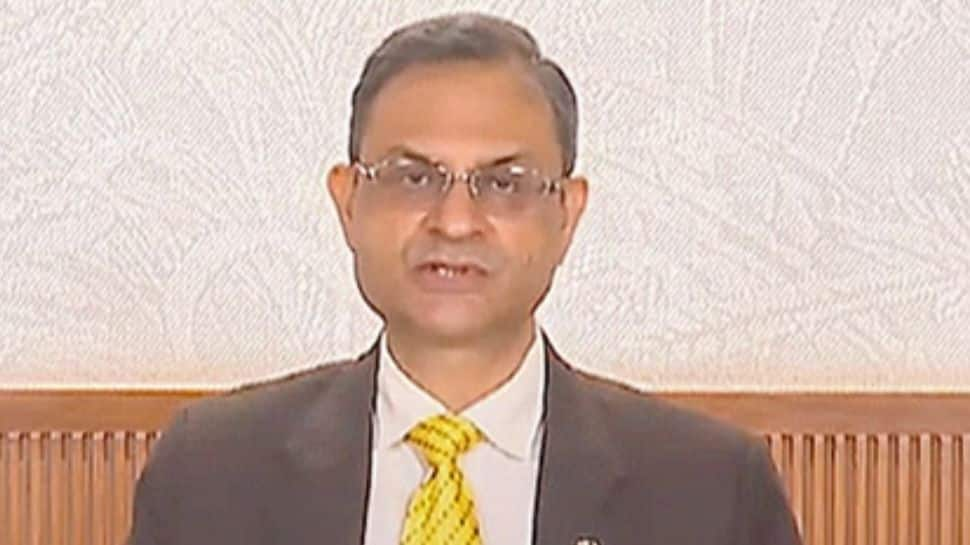New Delhi: Sanjay Malhotra has completed his first year as RBI Governor at a time when global volatility, tariff shocks and geopolitical tensions have tested financial systems everywhere. In an exclusive conversation with Zee Business Managing Editor Anil Singhvi, Malhotra discussed a wide array of topics, including interest-rate options ahead of the next MPC meeting, the rupee’s recent slide against the US dollar, the central bank’s gold reserves, foreign investment in banks, and the regulator’s broader priorities for financial stability. He said the RBI has navigated a difficult global backdrop with measured policy decisions and signalled that future rate cuts remain on the table depending on data and inflation trends.
Here are key excerpts from the interview:
Q1. How do you look back at your first year as RBI Governor?
Add Zee News as a Preferred Source
Ans. The past year brought a series of external challenges from US tariff actions to the Russia–Ukraine conflict and tensions in West Asia. Despite this, it has been a satisfying year for both the RBI and the wider economy. We reduced the repo rate by 100 basis points, supported liquidity whenever required, strengthened supervisory frameworks and focused on customer service. Inflation moved back inside the 2–6 per cent band and GDP growth reached 7.8 per cent in the June quarter. Banks and NBFCs became stronger, and 2.75 lakh customer-service camps were held nationwide. Overall, it has been a demanding but successful year.
Q2. Is the RBI prepared to cut interest rates in upcoming policy meetings?
Ans. Our mandate is clear: keep inflation under control and support growth. We do not take either an overly aggressive or overly defensive stance. As we had indicated in the October MPC, the direction for rate cuts is positive, but the actual decision will depend entirely on incoming data and deliberations in the next MPC meetings.
Q3. Does India need to increase its gold reserves further?
Ans. Over the past eight years, the RBI has added nearly 300 tonnes of gold. Our total holding is now around 880 tonnes, roughly 15 per cent of our forex reserves. Decisions on further purchases are highly sensitive, but India’s gold and foreign-exchange buffers are strong and stable.
Q4. The rupee has touched life lows. Is this concerning?
Ans. The rupee’s long-term trajectory is guided mainly by inflation differentials. A mild depreciation over time is natural. Historically, the rupee has weakened around 3 per cent a year. The RBI does not defend any specific level but ensures volatility stays contained so that businesses can plan without uncertainty.
Q5. Personal and unsecured loans are rising quickly. Is this a worry?
Ans. Asset quality remains satisfactory and the banking system is not facing systemic risk. Borrowers must, however, remain disciplined and repay loans on time. The MSME segment always requires monitoring but is stable at present. We continue to track this space closely.
Q6. Foreign investment in Indian banks is rising. Is the RBI comfortable with this?
Ans. Yes. Foreign ownership in the Indian banking system is still below 7 per cent — well under the 15 per cent limit. We encourage foreign participation but have safeguards to prevent excessive influence. The trend is positive and not a cause for concern.
Q7. Can an Indian commercial bank feature among the world’s top 10 lenders?
Ans. Certainly. The government is focused on banking-sector strength and the RBI is working towards building large, competitive and globally relevant banks. With India’s economic expansion, that milestone is very achievable.
Q8. How is the RBI using artificial intelligence in the financial system?
Ans. The RBI is already a front-runner globally in adopting AI. We use it to strengthen cybersecurity, improve fraud detection, enhance credit-risk assessment and analyse large data flows. Banks too are being encouraged to adopt AI safely to improve service quality and risk management.
Q9. How is India safeguarding its economy amid global weakness?
Ans. India’s current account deficit was only 0.6 per cent last year. It may rise slightly due to recent tariffs, but remains well within control. Our forex reserves are around USD 700 billion and the banking system is strong. India’s digital payments infrastructure is among the fastest globally. These fundamentals cushion us against global volatility.
Read More: Will RBI cut rate in the next policy? Governor Sanjay Malhotra in conversation with Anil Singhvi
Q10. What role will the RBI play as India moves towards a USD 5-trillion economy?
Ans. Our job is to make sure the economy has a stable foundation to grow on. India can reach the USD 5-trillion mark only if its financial system remains strong through that journey. That means keeping banks and NBFCs well-capitalised, maintaining financial stability and ensuring that services — from basic savings accounts to large corporate lending — work smoothly for every user. RBI’s focus over the next two years will be simple but critical: keep the system safe, keep growth steady and make day-to-day banking easier and more reliable for 140 crore Indians. A resilient financial sector is the backbone of long-term growth. Our effort is to strengthen that backbone every single day.
Q11. What message would you give borrowers and consumers?
Ans. Those who take loans must repay responsibly. Protecting customer data is a top priority for the RBI. We will continue to work on improving service standards across banks and financial institutions.


